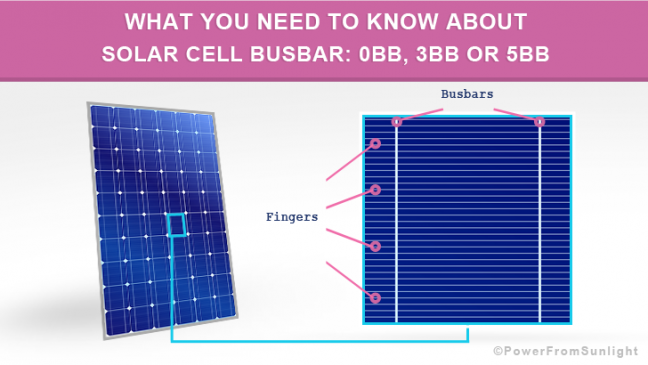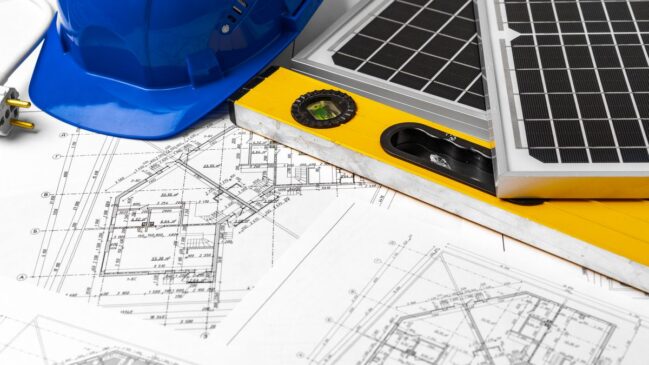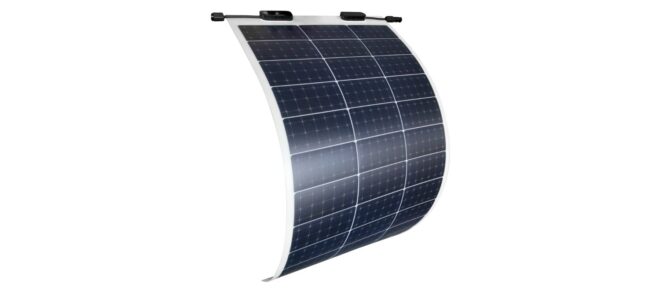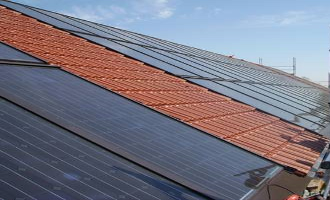
The Most Important Things To Know About Monocrystalline Solar Panels
What are the distinctive characteristics of monocrystalline solar cells? What distinguishes monocrystalline solar panels from polycrystalline and thin film modules? In which solar PV systems are monocrystalline solar panels used?

Monocrystalline solar cells consist of a single silicon crystal (c-Si) and have the highest level of efficiency at approximately 20% compared to other silicon cells.
Monocrystalline solar panels have a typical black to bluish coloring and are the preferred choice when there is a limited surface available to build a solar PV system.
Monocrystalline solar panels have a minimum lifetime of 20 years und have been proven in solar projects for many years.
Features of Monocrystalline Solar Cells and Monocrystalline Solar Panels
Monocrystalline solar cells distinguish themselves through their high quality and their high level of efficiency. They are produced in a complicated manufacturing process.
They are therefore more expensive than the other types of solar cells, and its environmental balance is worse than the other types of solar panels.
However, for the PV plant operators, the advantages outweigh the disadvantages: its long lifetime, its robustness, its low sensitivity to outside influences and ist simple installation.
They are particularly suitable for use in small solar PV systems, which point to the south.
The Efficiency of Monocrystalline Solar Panels

Monocrystalline solar panels have the highest level of efficiency especially, those so far available on the market.
On average, the efficiency rate of a multicrystalline solar panel varies between 16 and 18%. In direct sunlight, monocrystalline solar panels can achieve an efficiency level of up to 20%.
Temperature und Light Behavior of Monocrystalline Solar Panels
High ambient temperatures, as well as weak or diffuse lighting conditions, can affect the performance of the modules.
The absence of optimal lighting conditions leads to losses in performance of monocrystalline solar panels.
In order to overcome this difficulty, the right place must be chosen for the solar panels to be installed, and these modules should point as much as possible to the south.
Installation and Maintenance of Monocrystalline Solar Panels
Monocrystalline solar panels can be easily and without great effort installed on the roofs. Though they have a higher weight than the thin film modules, due to its construction method and its prefabricated mounting system, these modules can easily installed on the roof.
Its maintenance effort is low.
Aging and Degradation of Monocrystalline Solar Panels
Monocrystalline solar panels are incredibly strong and less sensitive to environmental influences. Because of their high quality, the age-related solar degradation means wearing, and aging phenomena are extremely minimal.
Monocrystalline solar panels have a very long lifetime of more than 30 years. This is the reason why manufacturers guarantee the minimum performance of their modules for 25 to 30 years. The maintenance effort of this module is also low.

Conclusion: Monocrystalline Solar Panels are long-lived and powerful
Due to their high acquisition costs, the use of monocrystalline solar panels is especially recommended where there is only limited space available to install a solar PV system.
Because on a little area, with the aid of monocrystalline solar panels a higher electricity production can be achieved than with polycrystalline solar panels and due to their longevity and their powerfulness, monocrystalline solar panels are recommended for users of small photovoltaic roof systems.
To know more about the most important differences between monocrystalline, polycrystalline and thin-film solar panels see this article.






